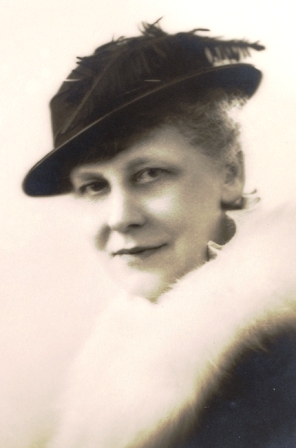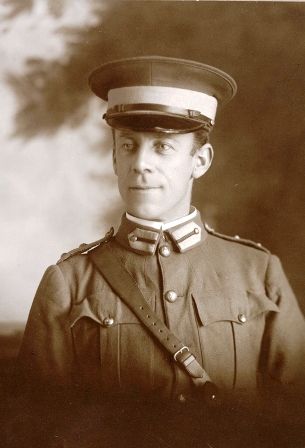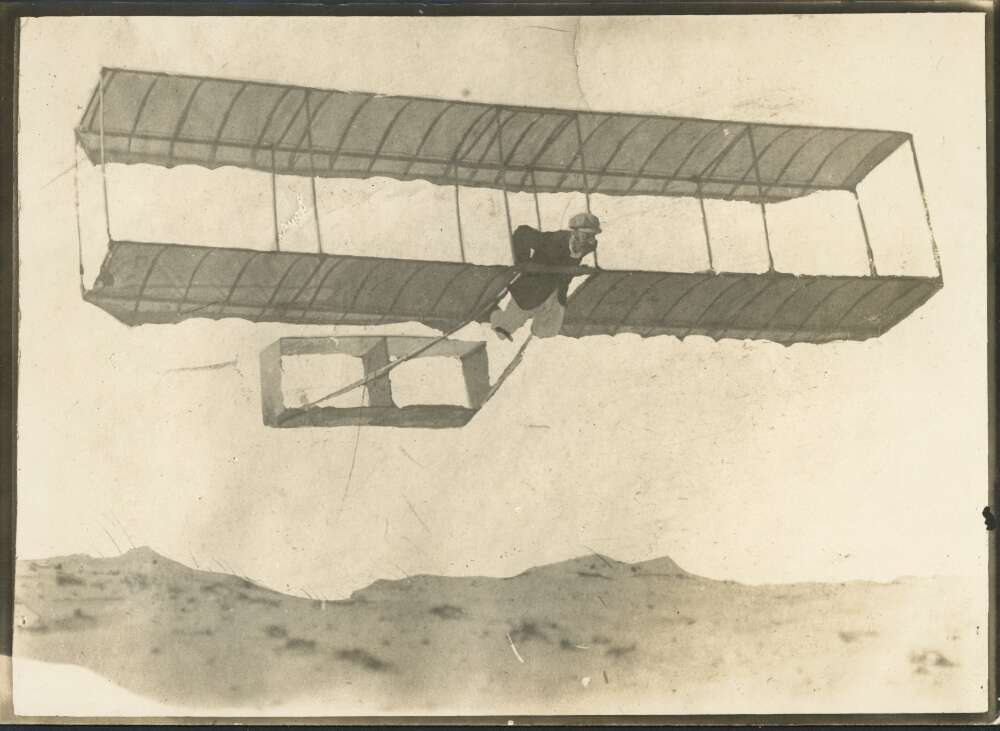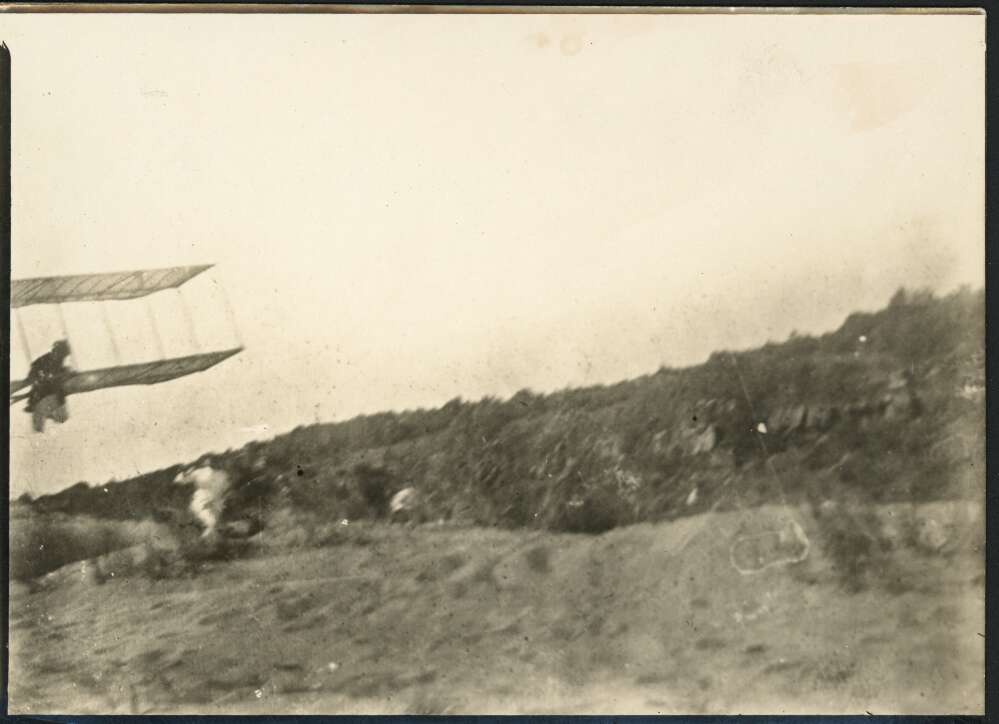August 14 - 20, 2011: Issue 19
First to fly in Australia, Sunday December 5th, 1909
George Augustine Taylor and Florence Mary Taylor
The First successful heavier-than-air flight in Australia occurred at Narrabeen Beach on Monday the 5th of December of 1909 and was taken by George Augustine Taylor, one of our pioneer aviators. This also constituted the first woman to fly in Australia when his wife, Florence, also took a turn. Over one hundred spectators and media gathered to witness the flight.
when his wife, Florence, also took a turn. Over one hundred spectators and media gathered to witness the flight.
The craft Taylor had built was a biplane glider. Constructed from coachwood and covered in oiled calico, with a box-kite tail for balance, the glider had a width of over twenty feet. They chose a launch area atop the dunes at the north end of the beach and pulled the tethered kite until it ‘nosed’ up into the winds and Mr Taylor called for these lines to be released. He manoeuvred the glider by shifting his weight.
Sources vary but most state that there were between 20-29 flights that day, made in 10-15 knot winds, that reached anywhere from 100 to 250 metres. Flights were made not only by George and Florence Taylor, but also by Edward Hallstrom (later Sir Edward Hallstrom), and Charles and Emma Schultz.
Reporting on Taylor’s triumphant flight, Aviation journalist, Jack Percival, wrote in The Sydney Morning "At 'let go' the wind immediately lifted the machine to the full length of the guide ropes and dragged the operators so fast that two let go; the machine now soared towards the ocean, and at the water's edge the remaining guide ropes were loosened, the machine making a leap upwards. Mr Taylor by careful manoeuvring, kept the machine well under control".
The original report in full:
GLIDING AT NARRABEEN. SENSATIONAL INCIDENTS. AN AUSTRALIAN-BUILT MACHINE.
On Sunday last Mr. George Taylor, secretary of the Aerial League, took a biplane, 18ft long, with 4ft planes, and box-kite tail balance, to Narrabeen. The trials at gliding were held, Mr. Taylor himself acting as demonstrator.
The scene of the flights was at Narrabeen Heads, in the presence of about one hundred visitors, the wide stretch of sand rendering any possible fall a matter of some safety.
At the beginning of the experiments the wind came from the south-east at 10 miles an hour. The machine was carried to a sand knoll, and brought face on to the wind. Messrs. Schultz, Le Clerc, and Gibbons, of Narrabeen, required all their strength to hold it down. For the preliminary flights the corners were held by guide ropes 15ft in length to prevent the machine from getting out of control before the experimenter was properly tuned to automatic balancing.
At the signal to let go the machine was well lifted by the wind, and by careful manipulation on the part of Mr. Taylor it shot towards the ocean 98 yards away in a series of curves from 3ft to 15ft above the ground, dragging its guides, who, however, pulled it to the ground at the water's edge.
 Twenty-nine successful flights were made by Mr. Taylor and Mr. Halstrom, an enthusiastic member of the Aerial League.
Twenty-nine successful flights were made by Mr. Taylor and Mr. Halstrom, an enthusiastic member of the Aerial League.
As the afternoon wore on the flights improved on account of the wind freshening to 15 miles an hour, and coming directly from the east so much so that the last flight of the day was notable.
At "let go" the wind immediately lifted the machine to the full length of the guide ropes, and dragged the operators so fast to the ocean that two let go; the machine now soared towards the ocean, and at the water's edge the remaining guide ropes were loosened, the machine making a leap upwards. Mr. Taylor by careful manoeuvring, kept the machine well under control, and dived it in the sea some little distance from the heads.
The machine will be fitted with steering gear and other improvements for further flights.
Mr. Taylor's monoplane is now having its powerful engine fitted to it at Gibson and Son's motor works at Balmain, and he hopes to have it in the air during Christmas week. If the flights are as successful as anticipated the machine will be placed at the disposal of the military authorities during the Kitchener camp and review. GLIDING AT NARRABEEN. (1909, December 7 - Tuesday). The Sydney Morning Herald (NSW : 1842 - 1954), , p. 3. Retrieved from http://nla.gov.au/nla.news-article15096414
Pic. No a1382001, Caption: George A. Taylor/The Broothorn Studios, Melbourne. Courtesy State Library of NSW. Top: Pic. No a1382002 Florence Taylor. Courtesy State Library of NSW.
Further reading:
THE HOUSE AT THE END OF THE ROAD By Robert Whitelaw
National Museum of Australia: George Taylors Biplane Glider; here
Florence Mary Taylor: http://adb.anu.edu.au/biography/taylor-florence-mary-8754
George Augustus Taylor: http://adb.anu.edu.au/biography/taylor-george-augustine-8756
Sir Edward Hallstrom: http://adb.anu.edu.au/biography/hallstrom-sir-edward-john-lees-10398

Above and below: 'George Taylor flying at Narrabeen', N.S.W., 1909. Courtesy National Library of Australia. Pictures nla.pic-an24152661 and nla.pic-an24152644

Threads collected by by A J Guesdon, 2011.